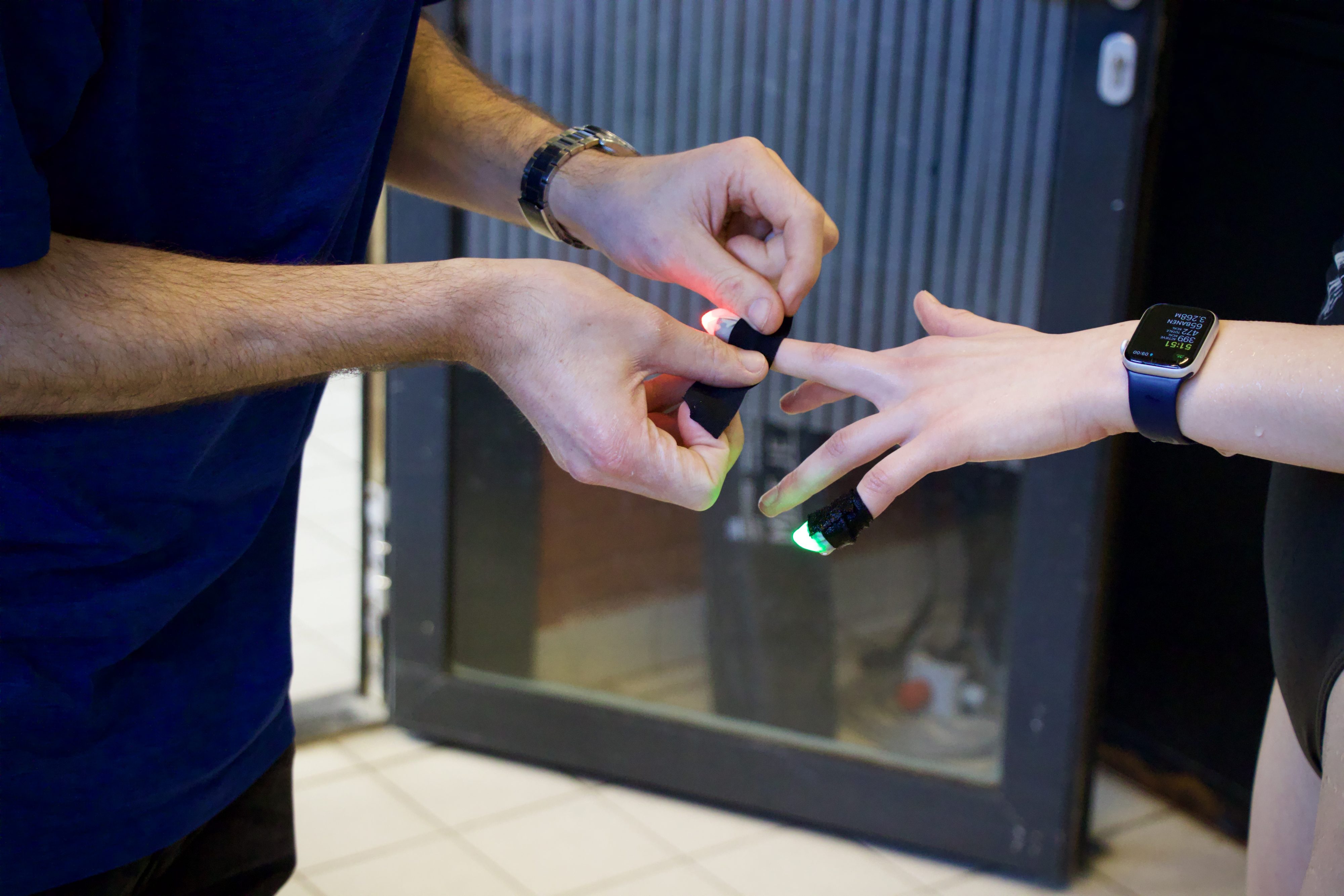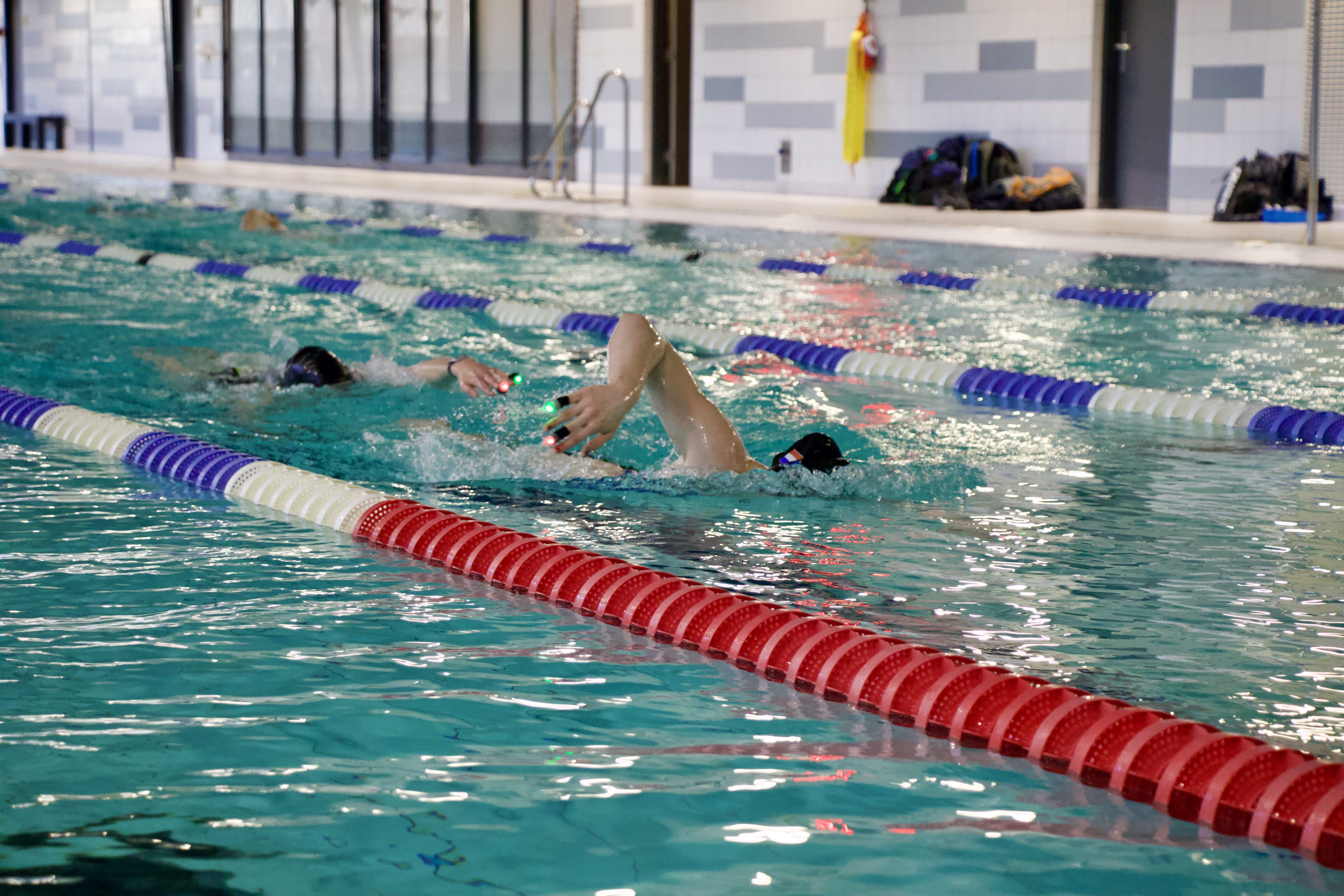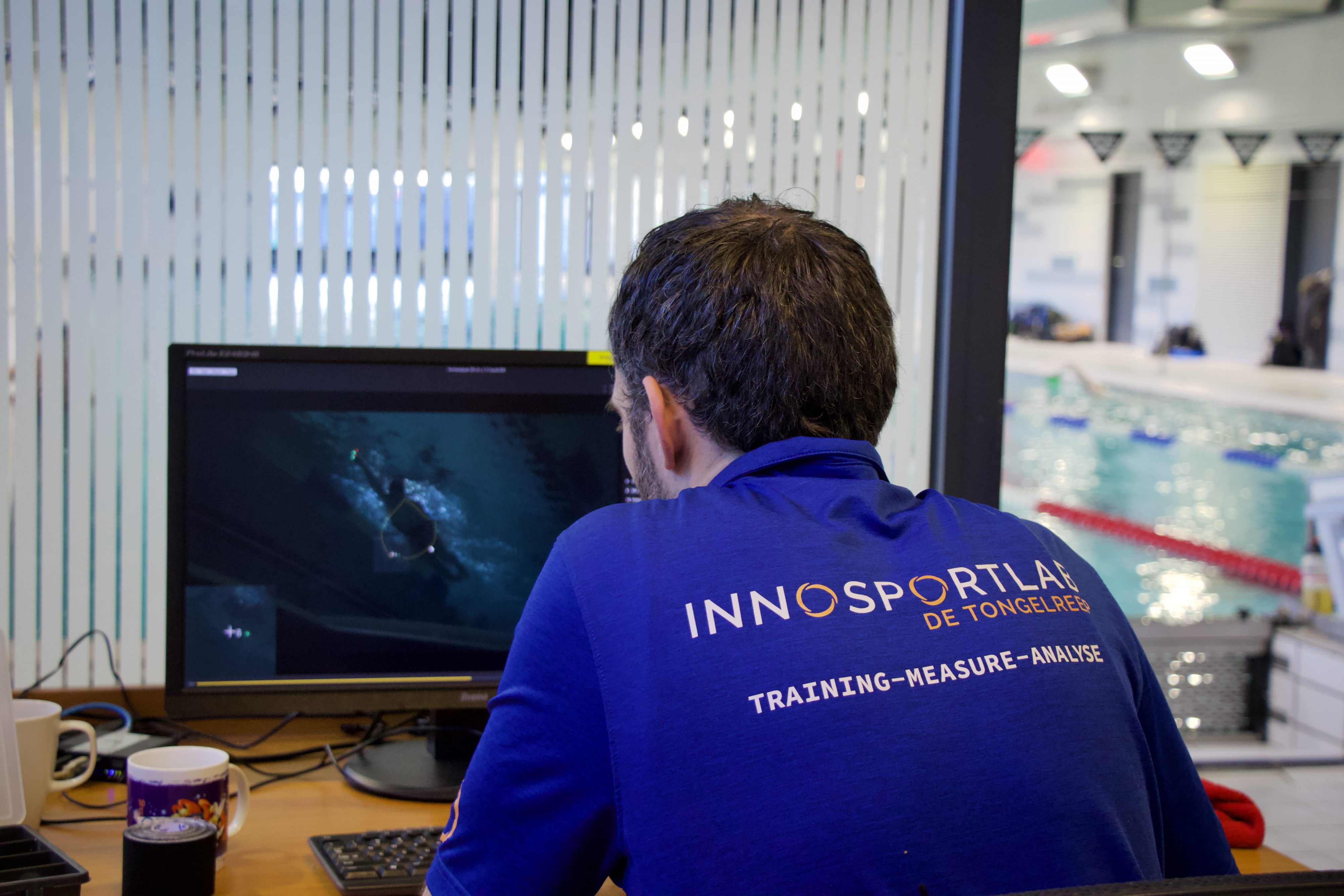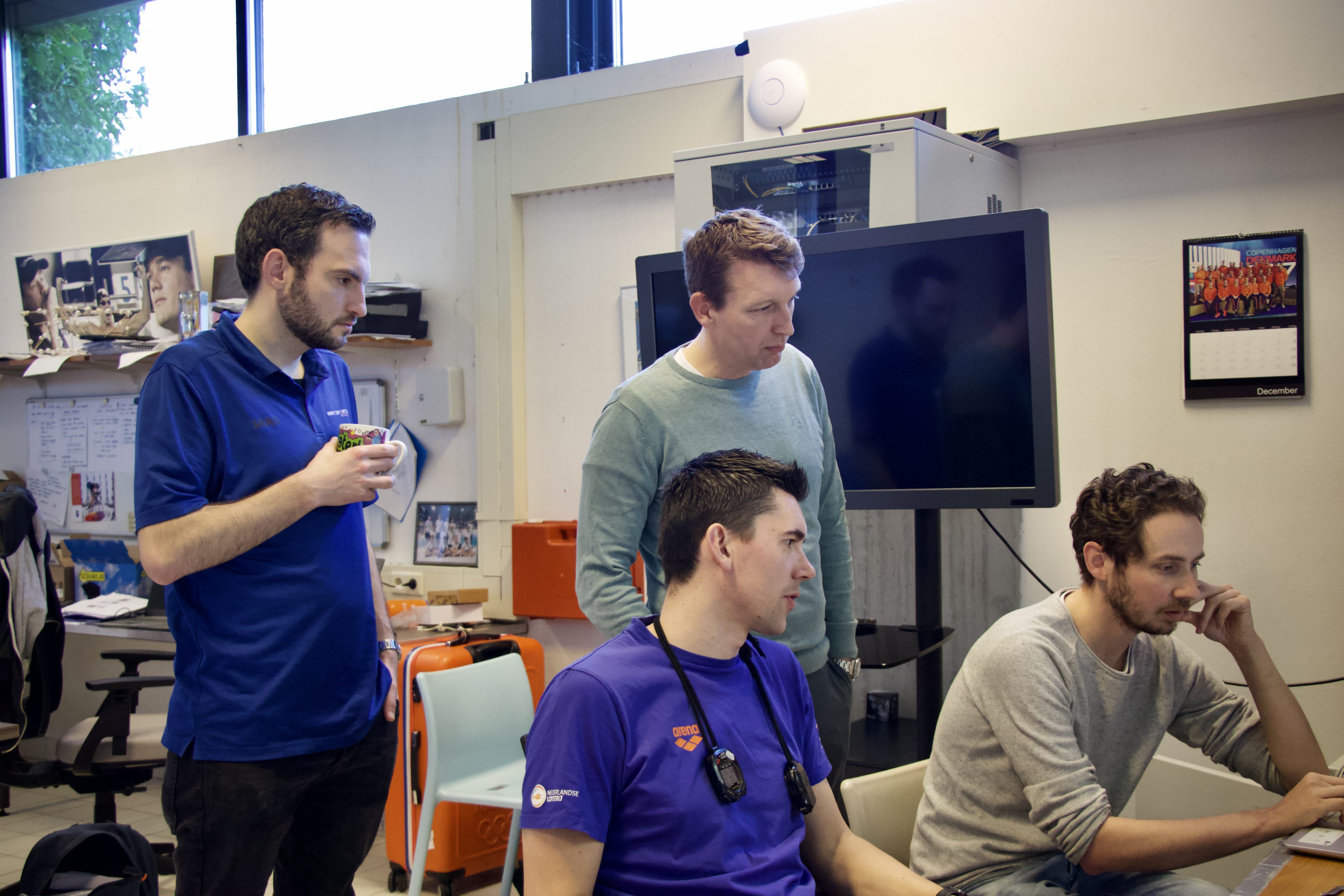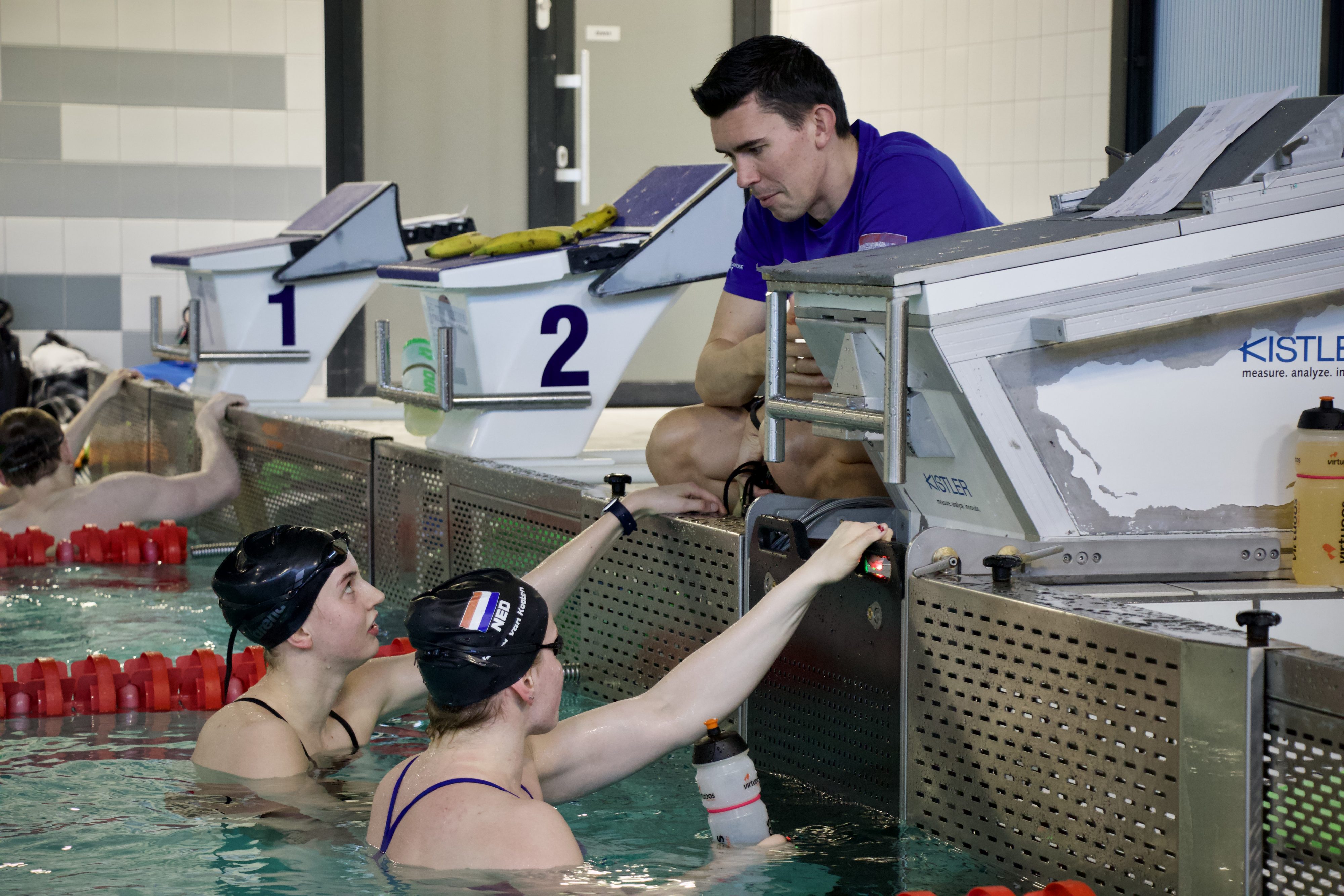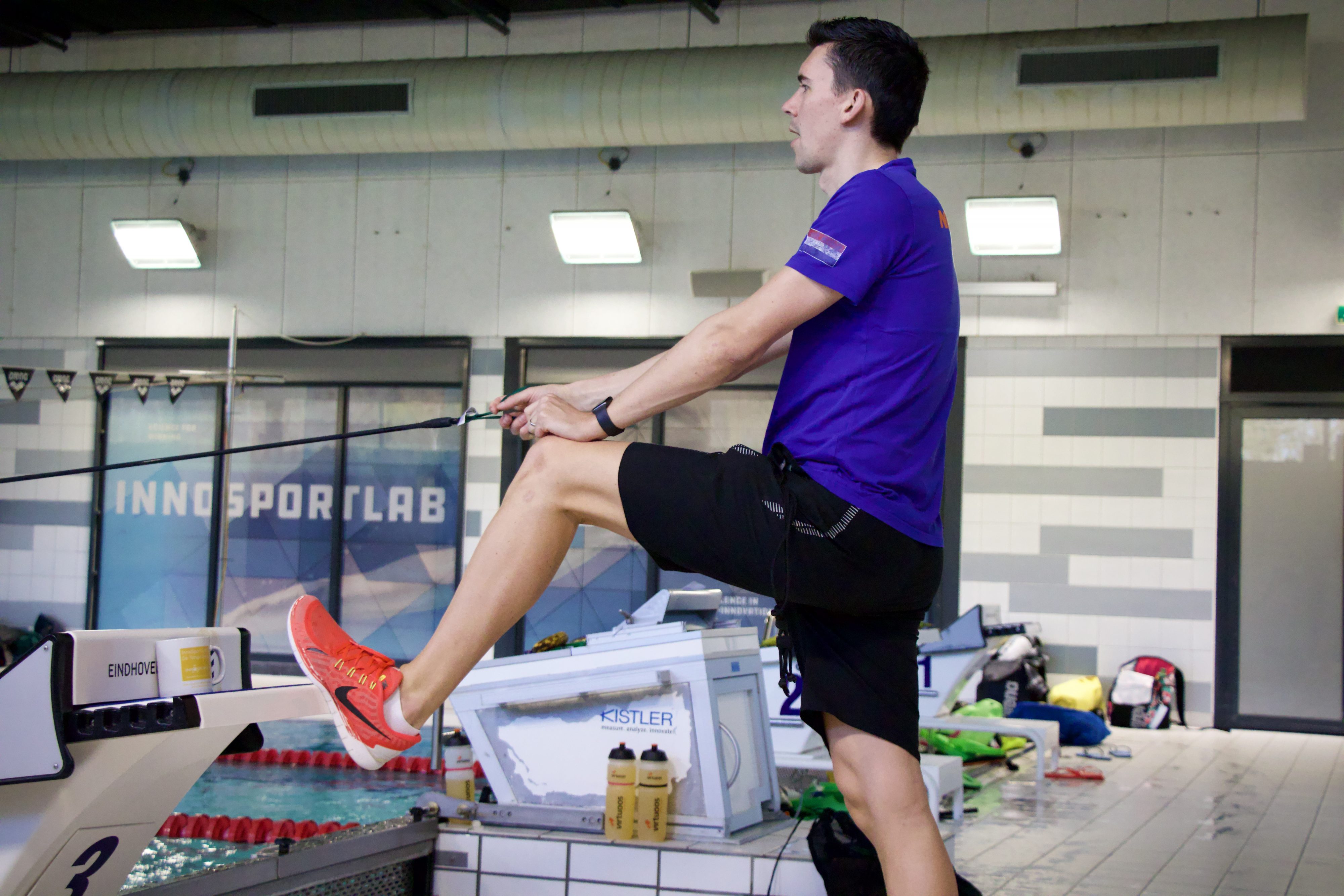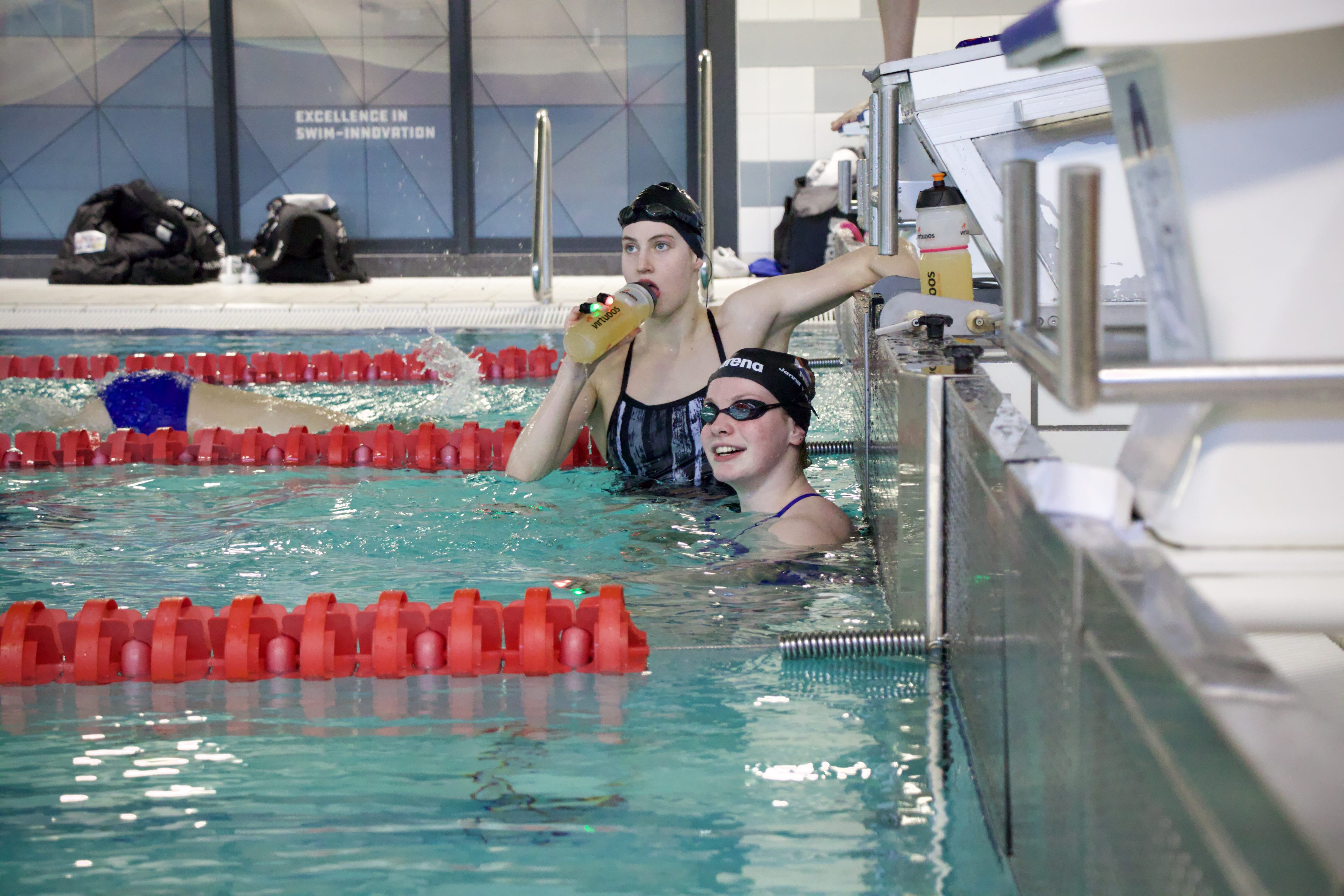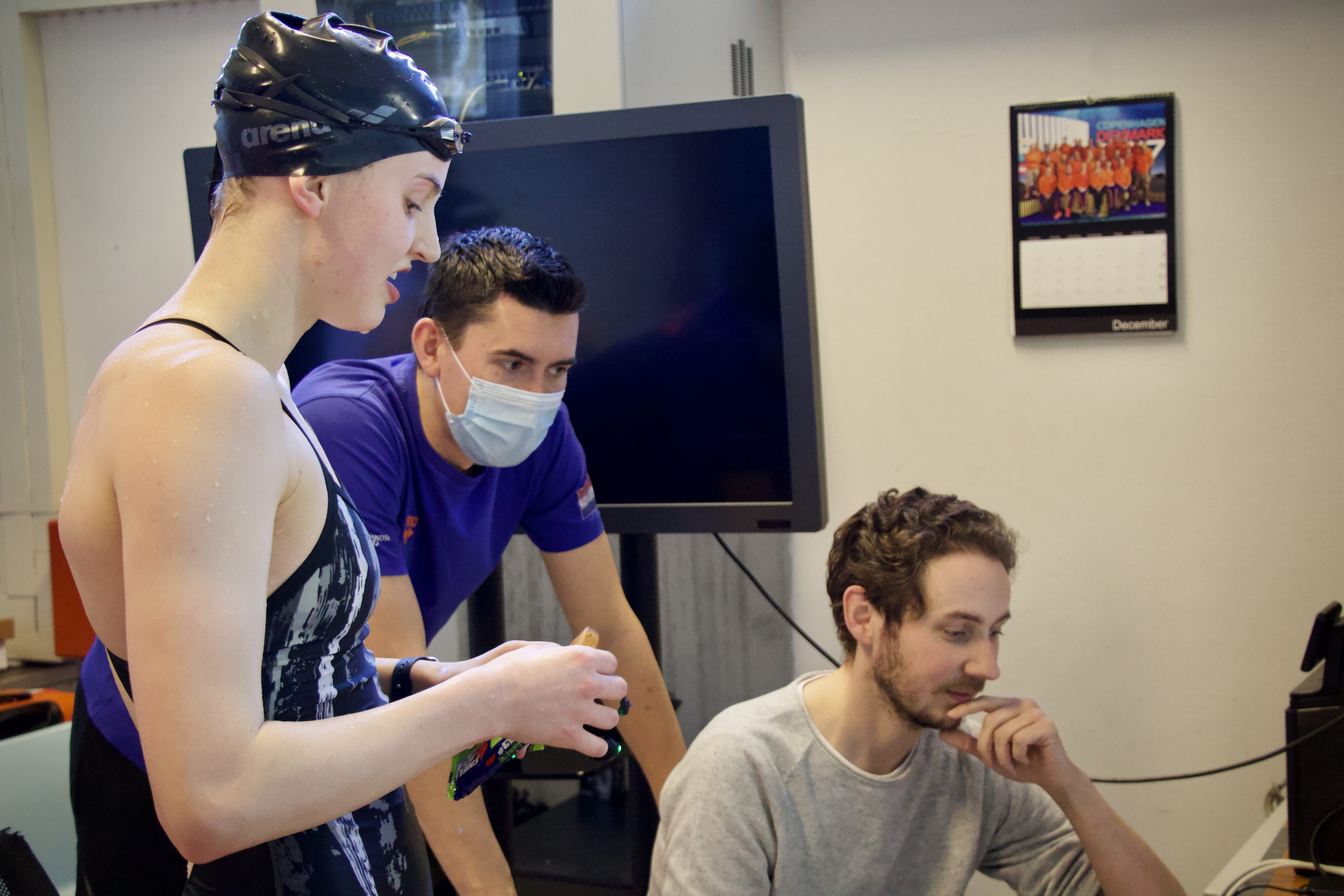Implementing changes – 3D stroke analysis with instant feedback
In last Friday’s practice Janna van Kooten and Yara van Kalmthout, two elite prospects of Dutch long-distance swimming worked on their strokes with the 3D stroke analysis system of the Lab, but on this occasion they had to apply changes to their swimming style after instant feedback.
Making changes in the strokes of professional swimmers is not an easy task. The muscle memory has studied something for years, which sometimes needs to be modified just a tiny bit to find those missing seconds. This requires a lot of concentration and dedication, but top swimmers must be able to control their body like no one else, and they were up to the task this time.
I would emphasize the fact that in the results the traject of the finger in multiple planes/ views could be seen and the swimmer and coach could match these results with the feeling during swimming.
The first step of the process was the application of the LED lights to the fingers of the athletes, who then started their training session with a few warm-up laps. This was followed by recording their strokes in a few laps with the help of the underwater camera system.
Next up the results were analyzed by the scientists of the lab, giving instant feedback to coach Thijs Hagelstein. With the results of the stroke analysis in mind he came back to the pool and gave the swimmers instructions based on the results to improve their strokes. In this session minor changes could be checked in terms of stroke patterns and effectiveness soon after performing the strokes.
After a few laps of getting used to the new techniques, another recording session was started. With the old and the new data in the system, the athletes had the chance to check out the results themselves with the help of the crew of InnoSportLab de Tongelreep.
This method gives swimmers the opportunity to get immediate feedback on their strokes without even leaving the pool. In the results the traject of the finger in multiple planes could be seen, which makes it possible for the swimmer and coach to match these results with the feeling during swimming. With the changes in mind they can try to achieve their best possible form of swimming, and in the end face the results of their efforts.
Photos & text: Bertalan Pusztai


